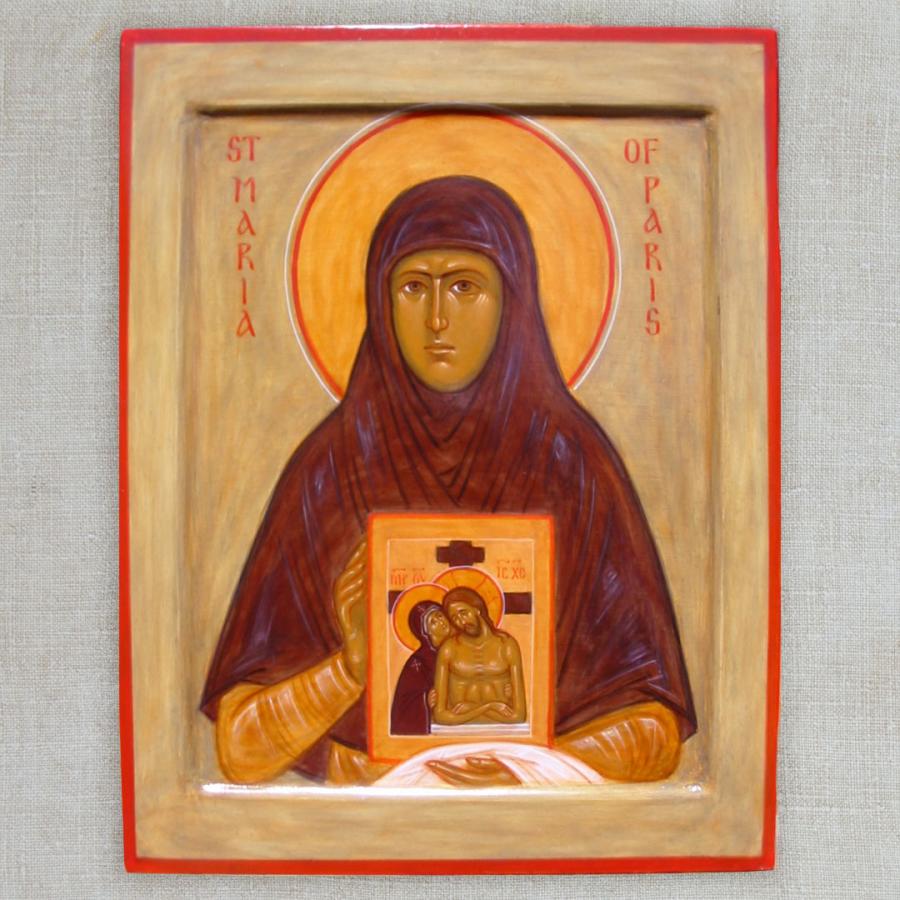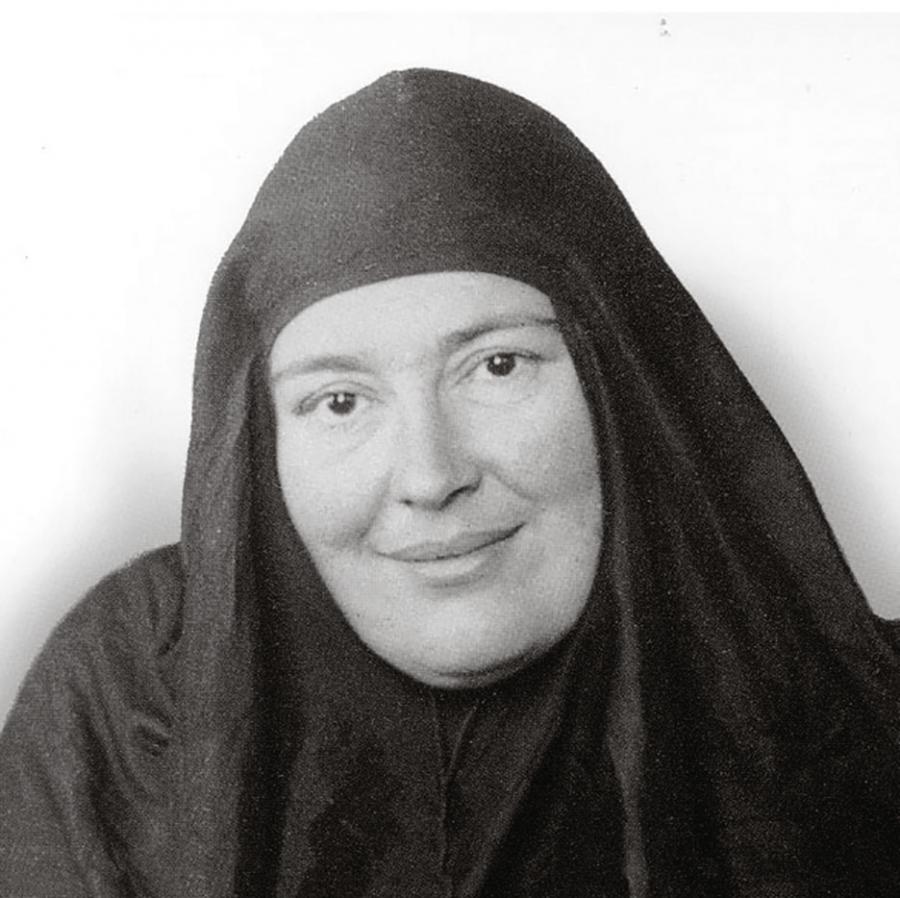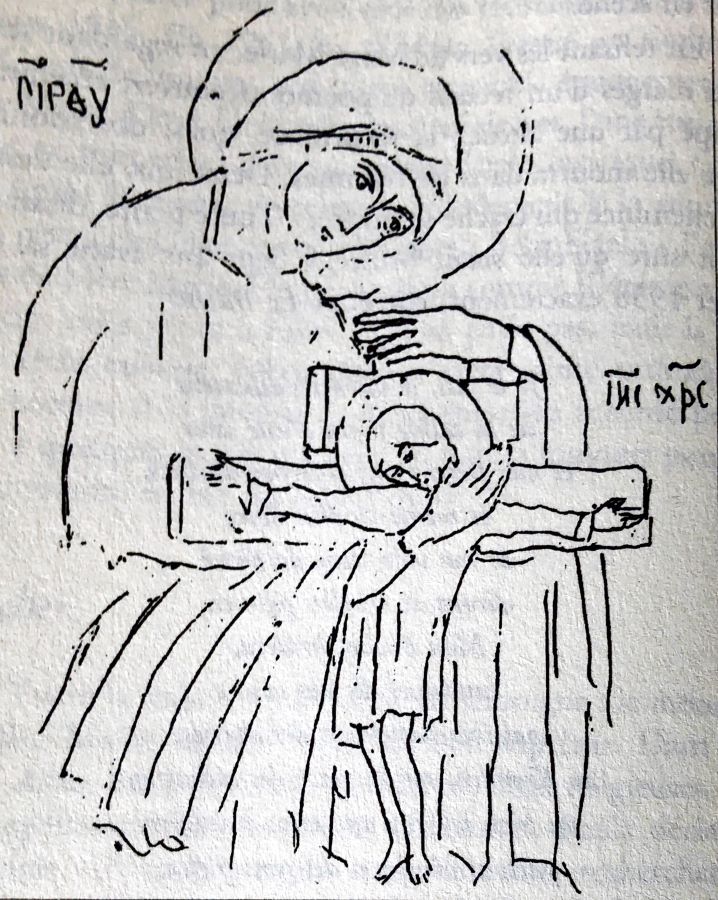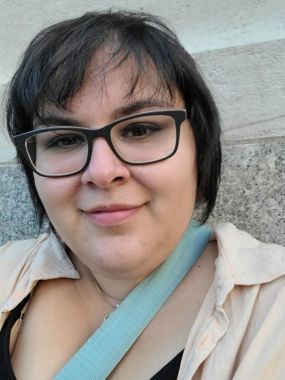
Mother Maria of Paris (Mother Maria Skobtsova) wrote a paper called (in English) “Concerning the Emulation of the Mother of God” that has made me love her. Mother Maria bases her argument off the idea that, if God became human at the incarnation, then his mother, the Theotokos has already achieved theosis: she’s a human who has become god or divinized. To Mother Maria, therefore, to fulfill the life in the Church, you have to imitate Christ AND the Mother of God. Which means since Christ voluntarily took up his cross for us and dies, we all have to take up our cross. And we also have to imitate the Mother of God. What does that mean? The cross becomes the two-edged sword that pierces the soul of the mother (in the Bible it says at Golgotha the mother’s heart was pierced by the cross of her son). So Mother Maria says that we voluntarily take up our crosses to imitate Christ, and involuntarily like His Mother we get pierced by the cross of others who are suffering. That’s why we have images of the Mother of God ceaselessly interceding for us, because even though in our theology she has not only gone through divinization and also already gone through the final judgment, she’s still intercedes for us unceasingly. Even from a place of paradise, she’s pierced by the crosses of everybody and unceasingly interceding.
The whole point of Mother Maria’s theology is that we voluntarily take up our cross to imitate Christ, and we’re pierced involuntarily by the crosses of others to imitate the Mother of God. I particularly love this quote of hers: “We can say that this is the only proper relation of one person to another only when one soul takes up another person’s cross, their doubts, their griefs, their temptations, their faults, only then is it possible to speak of a proper relation to one another.
We always say in our theology, “I see someone as the image of Christ.” But if we believe that Christ is in someone, that also means they are also the image of the Mother of God. I think that is so clever and cool, because it basically means that for each person we interact with, we have to recognize them as voluntarily taking up their cross–and also know that they are involuntarily being pierced by other people’s crosses. In such a profound way this is like trauma-informed care before it was a term.
It is profoundly amazing to think about seeing another person in this way. It has been life-changing for me personally because it describes a way of walking through the world. It’s not easy to be pierced by other people’s crosses. It is painful, especially since you are bound to be still struggling with your own cross. But it also means that I will be piercing other people! Being aware of that, understanding that, to me means that being in right relation with one another creates relationality: being together is the only way we can be. It is constitutive of what we are. It has to do with our crosses.

Reading what she wrote has been helping me think of other ways to imitate Christ and the Mother of God. Christ the pantocrator (like we often see in the dome of our churches) who brings the Gospel–and the Mother of God who is all-spacious. (I think spaciousness is a huge component of the Mother of God’s role in our lives.) Or: in the Gospels Christ is often proclaiming–while it says Mary keeps all these things in her heart: so there’s something about saying and keeping in your heart. If you look, you can find all these different ways that the Mother of God is participating in Christi’s work, and, if we reflect on them, they make us better at bearing Christ.
To go a little further: if I’m supposed to be the image of Christ, that means I’m bearing him, and looking at the image of the Mother of God helps me bear him better, because the Theotokos is literally the bearer of God. Reflecting on her in her unique role helps me be better at reflecting on Christ--and reflecting on Christ helps me reflect on her more fully, so that means even more fullness.
That’s what I like about this article by Mother Maria. It is not only beautiful in its own right, but it also helps me think even more deeply about my faith tradition and about the Mother of God in ways I had never considered. You might think of other examples yourself. Thank you, Mother Maria Skobtsova!
A sketch of an icon by Holy Mother Maria Skobtsova of Paris made as an embroidery while a prisoner at Ravensbrück concentration camp before being killed in the gas chamber. The original embroidery hasn't been preserved, but survivors of the camp described it. The drawing was made by Sister Jeanne (Reitlinger).


Rachel Contos is pursuing a doctorate in theological ethics at Fordham University.


